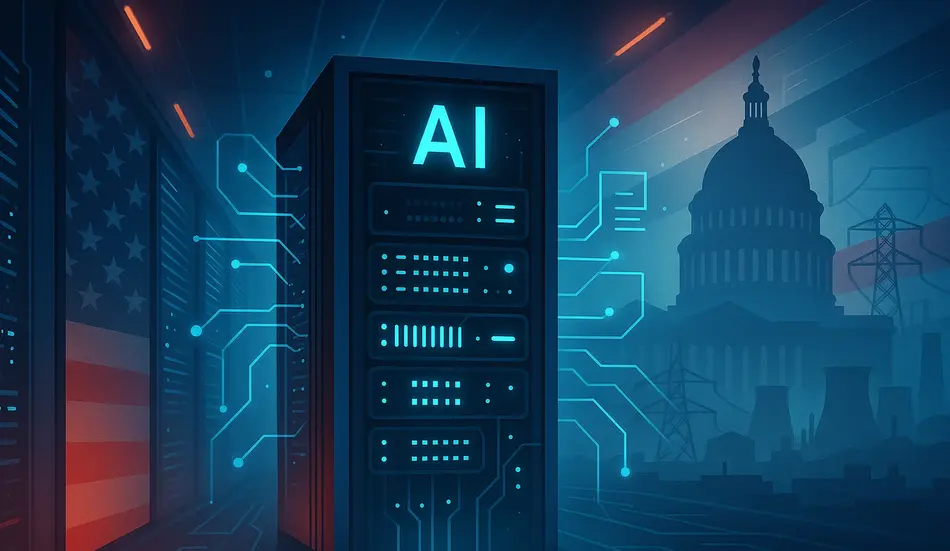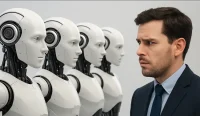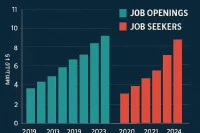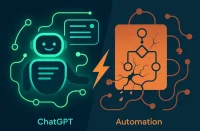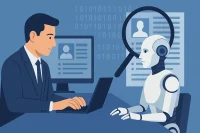Artificial intelligence is no longer just software running quietly on ordinary servers. Behind every major AI breakthrough—from chatbots that mimic human conversation to tools that can generate text, images, and even code—there is a hidden force: the AI supercomputer.
These vast networks of high-powered chips are the backbone of modern AI research. They are expensive, energy-hungry, and increasingly central to the global competition for technological dominance. Now, they’re also entering the world of politics.
Former U.S. President Donald Trump has drawn headlines by claiming that Nvidia’s move to build AI supercomputers in America is a result of his tariffs and trade policies. In campaign speeches and interviews, he has positioned this as proof that his approach to economics can deliver jobs and secure U.S. technological leadership.
But what exactly are AI supercomputers? Why do they matter for jobs and industry? And why are they suddenly part of the political conversation?
What Is an AI Supercomputer?
In the simplest terms, an AI supercomputer is a machine designed for parallel computing at scale. Instead of using a small number of central processing units (CPUs) like traditional computers, these systems employ tens of thousands—sometimes even hundreds of thousands—of graphics processing units (GPUs).
GPUs were originally designed to render video game graphics. But their architecture, which allows them to handle many small tasks simultaneously, turns out to be ideal for AI. Training a modern AI model involves processing billions of data points and adjusting trillions of parameters. CPUs can’t do this quickly enough—but GPUs can.
These GPU clusters are then connected with ultra-fast networking equipment and supported by sophisticated cooling and power systems. Together, they become an AI supercomputer—capable of training systems like OpenAI’s ChatGPT, Google’s Gemini, or Anthropic’s Claude.
Why Trump Is Talking About AI Supercomputers
The entry of AI supercomputers into American political discourse is not accidental. For Trump, Nvidia’s decision to expand U.S.-based chip production and assembly offers an opportunity to showcase his trade policies as effective.
- The Claim: Trump argues that his tariff-driven approach to China and other foreign manufacturing hubs pushed Nvidia toward building these machines in the United States.
- The Pitch: He frames it as a win for American workers, suggesting that AI supercomputers will create thousands of new jobs in chip production, assembly, and infrastructure.
- The Context: With AI becoming a cornerstone of the global economy, tying his policies to its growth allows Trump to claim a role in safeguarding America’s leadership.
For many voters, AI supercomputers may seem abstract. But when framed as “AI made in America”, the message resonates with broader concerns over jobs, security, and global competition.
The Economic Stakes
The construction and operation of AI supercomputers is no small matter. These machines cost billions of dollars and require highly skilled labor to build and maintain. That has ripple effects across the economy:
- Manufacturing Jobs: AI chips must be fabricated, packaged, and assembled. If more of this work shifts to the U.S., it could create thousands of high-paying manufacturing jobs.
- Data Center Expansion: AI supercomputers require massive data centers with advanced cooling systems. Building and operating these facilities opens new roles in construction, maintenance, and energy management.
- Specialist Tech Roles: Engineers, network architects, and AI researchers are in demand to design, optimize, and run these systems.
Industry analysts suggest that a domestic shift in AI supercomputer production could create an ecosystem of jobs around them—from blue-collar technicians to PhD-level AI scientists.
Build Your Future in AI & Tech Growth
From advanced manufacturing to data centers and specialist engineering, AI is fueling thousands of new opportunities. Search WhatJobs to find high-demand roles in technology, construction, and energy—and step into the future of work today.
Search Jobs Now →The Cost and Scale of the Machines
Nvidia, Microsoft, and other AI leaders are already deploying systems costing $5–$10 billion each. But these are just the beginning.
According to research from Epoch AI, by 2030 the world’s largest AI supercomputers could:
- Feature up to two million GPUs in a single system.
- Cost as much as $200 billion each.
- Consume nearly 9 gigawatts of power—the equivalent of a mid-sized city.
Today, Elon Musk’s xAI Colossus already consumes around 300 megawatts of electricity. That’s roughly enough to power 240,000 U.S. homes. Scaling up further raises pressing questions about sustainability, energy infrastructure, and costs.
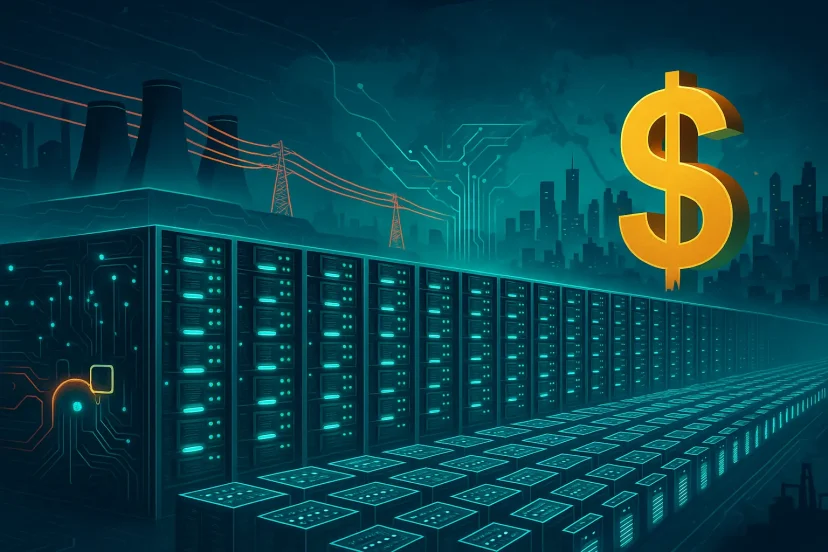
National Security and Geopolitics
AI supercomputers are not just about innovation and jobs—they are also about strategic advantage.
- China vs. the U.S.: China has invested heavily in its own AI supercomputing efforts, despite restrictions on importing advanced U.S. chips. For Washington, ensuring leadership in AI hardware is as much about security as economics.
- Supply Chains: By localizing production, the U.S. reduces its dependence on overseas manufacturing hubs like Taiwan and South Korea, both of which sit in geopolitically sensitive regions.
- Policy Leverage: AI leadership gives countries a strategic edge in defense, intelligence, and economic competitiveness.
For these reasons, AI supercomputers are increasingly framed not only as commercial products but as strategic assets—similar to oil reserves or nuclear technology in earlier eras.
Environmental Impact
With great power comes a very large carbon footprint. The energy demands of AI supercomputers are staggering.
- Cooling Needs: GPUs generate enormous heat, requiring advanced cooling systems—sometimes entire rivers or new water pipelines—to keep them running.
- Carbon Concerns: Unless powered by renewable energy, these systems could significantly increase emissions.
- Public Pushback: In regions where water scarcity is already an issue, local communities have begun to push back against new AI data center projects.
The challenge is finding a balance between technological progress, economic benefits, and environmental sustainability.
Industry Reaction
Nvidia, which dominates the GPU market, has positioned itself at the center of this story. The company has promised to increase U.S.-based manufacturing in response to both market demand and political pressure.
Other industry leaders have weighed in as well:
- Microsoft: Investing billions in AI supercomputing infrastructure through its partnership with OpenAI.
- Amazon Web Services (AWS): Building its own specialized chips to reduce dependence on Nvidia.
- Google: Continuing to develop its Tensor Processing Units (TPUs), proprietary chips designed for AI workloads.
The industry agrees on one point: AI supercomputers are essential for progress. The question is where they will be built—and who will control them.
Explore Careers in the AI & GPU Revolution
As Nvidia, Microsoft, AWS, and Google race to expand AI supercomputing and GPU manufacturing, thousands of new opportunities are emerging. From chip design and data centers to AI research and infrastructure, the next wave of jobs is already here. Search WhatJobs to find your place in the future of technology.
Search AI & GPU Jobs →Why This Matters for Workers
For job seekers, the rise of AI supercomputers is both an opportunity and a challenge:
- Opportunity: Thousands of roles could be created in construction, maintenance, chip fabrication, and data center operations. Tech professionals with skills in networking, machine learning, and systems optimization are also in high demand.
- Challenge: AI itself will continue automating certain tasks, meaning workers must adapt by learning new skills that align with the AI-driven economy.
At WhatJobs, we see this as part of a larger story: the reshaping of the global workforce by technology. AI supercomputers may not be visible in daily life, but their impact will ripple across industries and job markets.
FAQs
1. What exactly is an AI supercomputer?
It is a massive computer system built primarily with GPUs instead of CPUs. By running millions of parallel calculations, these machines can train advanced AI models such as chatbots, coding assistants, and generative image tools.
2. Why is Donald Trump talking about AI supercomputers?
He claims that his tariffs and trade policies influenced Nvidia’s decision to manufacture AI supercomputers in the United States, framing it as a win for American jobs and technology leadership.
3. How many jobs could AI supercomputers create?
Potentially thousands—ranging from manufacturing and assembly to infrastructure management and advanced engineering. The ecosystem also benefits local communities where data centers are built.
4. What are the risks of these machines?
Their costs are enormous—potentially $200 billion per system by 2030—and their energy demands are so high they could rival the consumption of a city. This raises questions about sustainability, emissions, and infrastructure strain.
Final Word
AI supercomputers are no longer just a technical curiosity. They are at the center of the AI revolution, shaping the future of jobs, politics, and global competition. Whether or not Trump deserves credit for Nvidia’s U.S. expansion, his focus on the issue reflects a reality: AI hardware is now as much a political talking point as it is a technological breakthrough.
For workers, policymakers, and businesses, the rise of AI supercomputers means one thing: the race to adapt is already underway.
